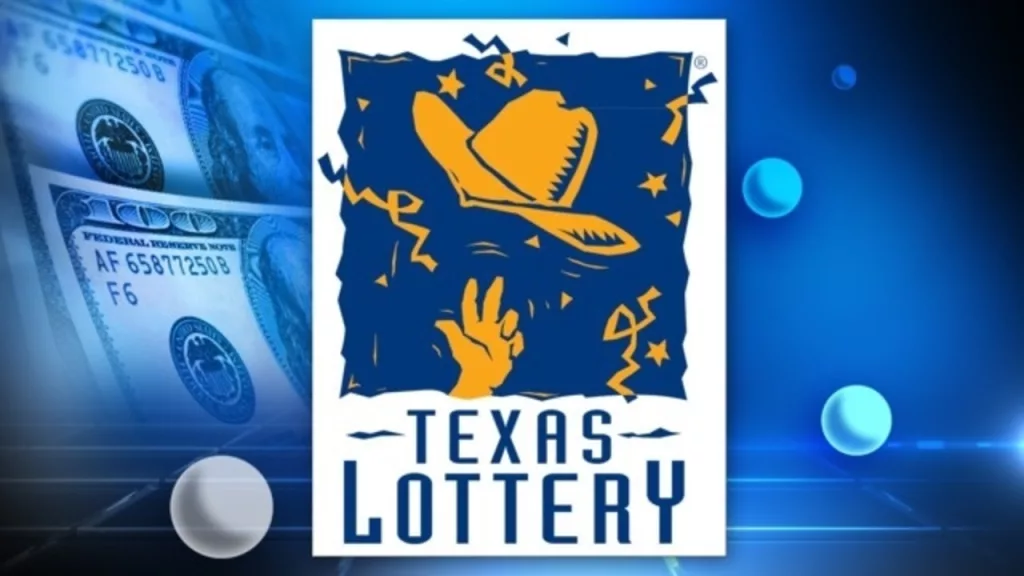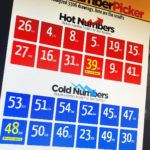Introduction
The Texas Lottery has been a source of excitement and hope for millions since its inception in 1992. With a variety of games like Powerball, Mega Millions, and Texas Two Step, there’s something for every lottery enthusiast. But how can you increase your chances of winning? In this guide, we’ll explore 7 proven strategies to master the Texas Lottery.

Understanding the Texas Lottery
The Texas Lottery offers a wide range of games, each with its unique rules and odds. Familiarize yourself with the different games available on the official Texas Lottery website.
1. Choose Your Game Wisely
Different games have different odds. Research the games that offer the best chances of winning. For example, Texas Two Step might have better odds compared to Mega Millions.
2. Utilize the Frequency Theory
Frequency theory, often applied to lottery games, is a strategy based on the analysis of individual numbers or combinations of numbers that have appeared in previous draws. The idea is to identify patterns or trends that might help predict future outcomes. Here’s a detailed look at frequency theory:
What Is Frequency Theory?
Frequency theory is the belief that certain numbers are drawn more frequently than others, and by studying past results, one can predict which numbers are more likely to appear in future draws. This theory is often applied to games of chance, such as lotteries.
How Does It Work?
- Data Collection: The first step in applying frequency theory is to collect data on previous lottery draws. This data includes the numbers that have been drawn and how often they have appeared.
- Analysis of Hot and Cold Numbers:
- Hot Numbers: These are numbers that have been drawn more frequently in recent draws. Proponents of frequency theory may choose to play these numbers, believing they are more likely to be drawn again.
- Cold Numbers: Conversely, cold numbers are those that have not been drawn for a while. Some players may choose to play these numbers, thinking that they are “due” to be drawn soon.
- Creating Combinations: Based on the analysis, players may create combinations of hot, cold, or a mix of both types of numbers for their lottery tickets.
- Ongoing Monitoring: Frequency theory requires ongoing monitoring and analysis of draw results to update the hot and cold numbers.
Pros and Cons of Frequency Theory
Pros:
- Data-Driven Approach: Frequency theory is based on actual draw results, making it a more analytical approach compared to random selection.
- Increased Engagement: Analyzing draw results and selecting numbers based on frequency can add an extra layer of engagement and excitement for players.
Cons:
- No Guarantee of Success: Like all lottery strategies, frequency theory does not guarantee success. Lottery draws are random events, and past results do not necessarily influence future outcomes.
- Time-Consuming: Collecting and analyzing data can be time-consuming, especially for players who do this manually.
Frequency theory offers an intriguing approach to playing lottery games, grounded in the analysis of past results. While it can add enjoyment to the game and provide a sense of control, it’s essential to recognize that lottery games are games of chance. The randomness of draws means that no strategy, including frequency theory, can guarantee success.
Players interested in applying frequency theory can often find tools and resources online that provide analysis of hot and cold numbers for various lottery games. These tools can simplify the process of applying frequency theory but should be used with the understanding that they do not change the fundamental odds of winning a lottery game.
3. Join a Lottery Pool
Pooling resources with friends or coworkers can increase your chances of winning without spending more money.
4. Play Regularly But Responsibly
Consistency can be key, but always play within your means.
5. Consider Second-Chance Games
Second-chance games are special drawings that allow players to enter non-winning tickets into a separate drawing for a chance to win prizes. These games are often associated with scratch-off tickets or specific lottery games.
How Do They Work?
- Entry Process: Players can enter their non-winning tickets into second-chance drawings through the lottery’s website or a designated platform. Some lotteries may require players to create an account to track entries.
- Drawings: The second-chance drawings are conducted separately from the main lottery drawing. The frequency of these drawings can vary, ranging from weekly to monthly or even on a one-time basis for special promotions.
- Prizes: Prizes for second-chance games can be quite diverse. They may include cash, merchandise, vacations, or even entries into other lottery games. Some second-chance games offer substantial cash prizes, adding significant allure to these opportunities.
- Odds: The odds of winning in a second-chance drawing depend on the number of entries and the specific rules of the game. They can provide better odds than the main lottery game, especially if participation is lower.
- Promotions: Second-chance games are often used as promotional tools by lottery operators. They can be tied to specific themes, holidays, or events, and may include partnerships with other brands or products.
Benefits of Second-Chance Games
- Increased Engagement: By offering a second chance to win, these games encourage players to stay engaged with the lottery, even if they didn’t win initially.
- Enhanced Player Experience: Second-chance games add an extra layer of excitement and opportunity, enhancing the overall player experience.
- Waste Reduction: By incentivizing players to keep and use their non-winning tickets, second-chance games can contribute to reducing litter and waste associated with discarded tickets.
Second-chance games are a valuable addition to the lottery landscape, providing players with additional opportunities to win and enhancing the overall lottery experience. They reflect a player-centric approach, recognizing that even non-winning tickets can have value and excitement. Whether it’s the thrill of a potential cash prize or the allure of a unique experience, second-chance games add a new dimension to traditional lottery play. Players are encouraged to check their local lottery’s rules and regulations to understand the specific details and opportunities related to second-chance games in their area.
6. Trust Your Instincts
Sometimes, gut feelings can lead to a winning ticket. Trust your instincts but combine them with logical strategies.
7. Stay Informed
Keep up with the latest news, updates, and changes in the Texas Lottery. Follow their official Twitter account for real-time updates.
Conclusion
Winning the Texas Lottery may seem like a dream, but with careful strategy and a bit of luck, it’s a dream that could come true. Remember to play responsibly and enjoy the thrill of the game.
References:
- Texas Lottery Official Website
- Texas Lottery Commission Annual Report
- The Frequency Theory in Lottery Games: Does It Really Work?
- Hot and Cold Numbers Analysis: An article or tool that analyzes hot and cold numbers for various lottery games. Example: Lottery Post – Hot & Cold Numbers
- Statistical Analysis of Lottery Draws: A scholarly article or statistical analysis that explores the mathematics behind lottery draws. Example: A Statistical Analysis of Popular Lottery “Winning” Strategies
- Lottery Strategies and Myths: An article that explores various lottery strategies, including frequency theory, and debunks common myths. Example: The Balance Everyday – Lottery Strategies
- Online Tools for Lottery Analysis: A website or tool that provides online analysis of lottery numbers based on frequency theory. Example: Lottery Analyzer





